Functional review of precurved non-tunnelled catheters for haemodialysis
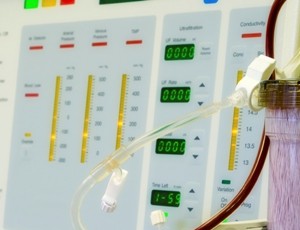
Our objective was to assess whether precurved non-tunnelled central venous catheters are comparable to tunnelled central venous catheters in terms of infection and catheter malfunction and to assess whether precurved non-tunnelled catheters are superior to straight catheters” van Oevelen et al (2018). Abstract: BACKGROUND: The main limitations of central venous catheters for haemodialysis access are […]
Ultrasound guidance for pediatric central venous catheterization
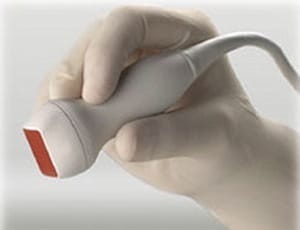
Ultrasound-guided techniques are associated with a reduced incidence of failures and inadvertent arterial punctures in pediatric central venous catheterization when compared with the anatomic landmark technique” de Souza et al (2018). Abstract: CONTEXT: Central venous catheterization is routinely required in patients who are critically ill, and it carries an associated morbidity. In pediatric patients, the […]
Mode of drug delivery in septic shock patients treated with vasopressors

50% of the ARISE cohort commenced VP within 4.4 h of ED presentation, and many did so prior to central venous access. Earlier initiation of VP was associated with greater crude and adjusted 90-day mortality” Udy et al (2018). Abstract: INTRODUCTION: To describe the utilization of vasopressors (VP) in patients enrolled in the Australasian Resuscitation In […]
Hemodialysis using the Cardio-Renal Pediatric Dialysis Emergency Machine
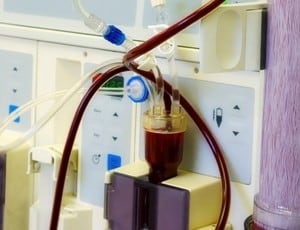
We report the first worldwide experience with continuous veno-venous hemodialysis (CVVHD) in children using the last generation Cardio-Renal Pediatric Dialysis Emergency Machine (CARPEDIEM)TM device” Vidal et al (2018). Abstract: We report the first worldwide experience with continuous veno-venous hemodialysis (CVVHD) in children using the last generation Cardio-Renal Pediatric Dialysis Emergency Machine (CARPEDIEM)TM device. Thirteen children […]
Review of variation in infection prevention practices for PICC care

To evaluate evidence supporting infection prevention practices for CVCs recommended in national guidelines and to compare with reported practices for peripherally inserted central catheters (PICC), a type of CVC widely used in NNUs” Fraser et al (2018). Abstract: BACKGROUND: There is uncertainty about the variation in infection prevention practices for central venous catheters (CVC) in […]
Psychological interventions to combat needle-related procedural pain

This is the second update of a Cochrane Review (Issue 4, 2006). Pain and distress from needle-related procedures are common during childhood and can be reduced through use of psychological interventions (cognitive or behavioral strategies, or both)” Birnie et al (2018). Abstract: BACKGROUND: This is the second update of a Cochrane Review (Issue 4, 2006). […]
Clinical outcomes of tunneled central jugular and femoral central venous catheters

The literature on the outcomes of tunneled femoral catheters compared to that of jugular catheters is scarce and derived mainly from small cohorts” Guillermo-Corpus et al (2018). Abstract: BACKGROUND: The literature on the outcomes of tunneled femoral catheters compared to that of jugular catheters is scarce and derived mainly from small cohorts. MATERIAL AND METHODS: […]
What is the optimal blood draw volume for children in clinical trials?
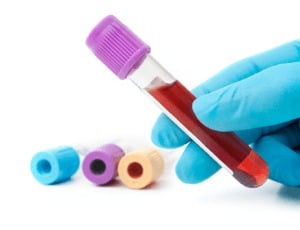
The aim of the study was to assess the safety of blood draws in children aged six months to 12 years targeting volumes of 3% of total blood volume” Peplow et al (2018). Abstract: AIM: Recommendations for maximum blood draw in children range from 1 to 5% despite limited evidence. The aim of the study […]
Thrombosis risk of vascular access devices among critically ill medical patients

The relative risk of VTE between these catheter types is not well defined. We report the rate of VTE in intensive care unit (ICU) medical patients receiving PICC, CVC, both, or neither” White et al (2018). Abstract: BACKGROUND: Central venous catheters (CVC) and peripherally inserted central catheters (PICCs) are central vascular access devices (CVADs) that […]
Catheter-related staphylococcus aureus bacteremia and septic thrombosis

We retrospectively studied the clinical characteristics of patients with Staphylococcus aureus catheter-related septic thrombosis and the outcomes related to different management strategies” wilson Dib et al (2018). Abstract: BACKGROUND: Catheter-related septic thrombosis is suspected in patients with persistent central line-associated bloodstream infection (CLABSI) after 72 hours of appropriate antimicrobial therapy. The clinical diagnosis and management […]
Integrated dressing to secure peripheral intravenous catheters
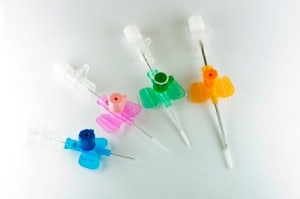
The reported incidence of peripheral intravenous catheter (PIV) failure has been as high as 69%. This is in part due to inadequate stabilisation or securement to the skin, which allows micro-motion of the catheter within the vein” Marsh et al (2018). Abstract: BACKGROUND: The reported incidence of peripheral intravenous catheter (PIV) failure has been as […]
Central venous catheter tip location confirmed with agitated saline bubble-enhanced ultrasound

Dynamic ultrasound-based visualization of microbubbles in the right atrium is a highly accurate method to detect percutaneous implantation of large-lumen, tunneled, central venous catheters without the need for fluoroscopic guidance technology” Passos et al (2018). Abstract: BACKGROUND: In patients with end-stage renal disease, the use of cuffed, tunneled dialysis catheters for hemodialysis has become integral […]
Eliminating or reducing needle pain in children using lean methodology

Over 200,000 patients experience needle pain annually in our institution, caused by blood draws, intravenous access, vaccinations, and injections on all inpatient units, emergency departments, outpatient laboratories, and ambulatory clinics” Friedrichsdorf et al (2018). Abstract: INTRODUCTION: Pain remains common, underrecognized, and undertreated in children’s hospitals and pediatric clinics. Over 200,000 patients experience needle pain annually […]
Who are the best peripheral intravenous catheter inserters?
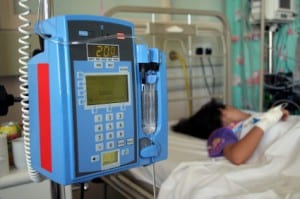
Peripheral intravenous catheters (PVCs) are essential invasive devices, with 2 billion PVCs sold each year. The comparative efficacy of expert versus generalist inserter models for successful PVC insertion and subsequent reliable vascular access is unknown” Marsh et al (2018). Abstract: BACKGROUND: Peripheral intravenous catheters (PVCs) are essential invasive devices, with 2 billion PVCs sold each […]
Blood sampling guidelines with focus on patient safety and identification

We recommend that patient identification must be done using open questions and ideally three separate pieces of information. Labelling of the tube or linking the identity of the patient to the tube label electronically must be done in the presence of the patient whether it is before or after sampling” Cornes et al (2018). Abstract: […]
Intraosseous access in the treatment of patients after out-of-hospital cardiac arrest

Only a little is known about the frequency of use of supraglottic airway devices (SADs) and intraosseous (IO) access in patients who have had out-of-hospital cardiac arrest (OHCA)” Christ et al (2018). Abstract: INTRODUCTION: Only a little is known about the frequency of use of supraglottic airway devices (SADs) and intraosseous (IO) access in patients […]
How to prevent central line-associated bloodstream infections in the intensive care unit

The purpose of this article is to describe a quality initiative that used principles of high reliability to develop a zero tolerance culture for central line-associated bloodstream infections…” McCraw et al (2018). Abstract: This department column highlights translation of research into healthcare quality practice. Achieving the highest quality in healthcare requires organizations to understand care […]
Interventions to treat obstructive long-term central venous catheter in cancer patients

The aim of this systematic review was to identify the interventions used to treat obstructive events, whether thrombotic or non-thrombotic, in long-term central venous catheters (LT-CVC) in cancer patients” da Costa et al (2018). Abstract: PURPOSE: The aim of this systematic review was to identify the interventions used to treat obstructive events, whether thrombotic or […]
Pilot intervention to increase the use of single-lumen Peripherally Inserted Central Catheters

We conducted a pilot study to increase the use of single-lumen PICCs in hospitalized patients” Bozaan et al (2018). Abstract: To reduce risk of complications, existing guidelines recommend use of peripherally inserted central catheters (PICCs) with the minimal number of lumens. This recommendation, however, is difficult to implement in practice. We conducted a pilot study […]
Antibiotic lock therapy for salvage of tunneled central venous catheters

Antibiotic lock therapy (ALT) represents one such strategy to achieve such high intraluminal concentrations of antibiotics and can facilitate catheter salvage” Zanwar et al (2018). Abstract: Central Venous Catheters (CVCs) represent a significant source of infection in patients undergoing hematopoietic stem cell transplantation and can add to the cost of care, morbidity, and mortality. Organisms […]
Integrative review of Vessel Health and Preservation
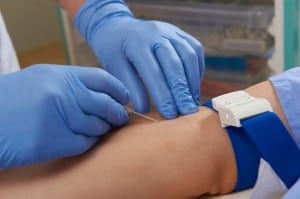
To describe and synthesise current knowledge on the maintenance and preservation of vessels in patients who need the placement of a vascular access device (VAD)” Fiorini et al (2018). Abstract: AIMS: To describe and synthesise current knowledge on the maintenance and preservation of vessels in patients who need the placement of a vascular access device […]
Qualitative study examines procedural pain in children

We have identified core information needs for caregivers whose children are experiencing IV insertion or venipuncture” Shave et al (2018). Abstract: BACKGROUND: Children experience multiple painful procedures when being cared for in emergency departments (EDs). Unfortunately, evidence-based interventions to manage such pain and distress are under-utilized across EDs. Caregivers are uniquely positioned and invested to […]
Meta-analysis of hospital-to-home interventions for children

Hospital-to-home transitions are critical opportunities to promote patient safety and high-quality care. However, such transitions are often fraught with difficulties associated with increased health care use and poor patient satisfaction” Hamline et al (2018). Abstract: CONTEXT: Hospital-to-home transitions are critical opportunities to promote patient safety and high-quality care. However, such transitions are often fraught with […]
Catheter removal and outcomes of multidrug-resistant central-line-associated bloodstream infection

Our objective was to determine the relationship between failure to remove a central venous catheter (CVC) and 30-day all-cause mortality in patients with MDRO CLABSIs” Burnham et al (2018). Abstract: Central-line-associated bloodstream infections (CLABSIs) are responsible for ∼1/3 of all deaths from healthcare-associated infections in the United States. Of these, multidrug-resistant organisms (MDROs) are responsible […]
Prognostic value of serum proadrenomedullin in catheter-related bloodstream infection

Proadrenomedullin (pro-ADM) has emerged as a valuable marker of sepsis. The potential role of pro-ADM in predicting the prognosis of CRBSI was evaluated” Ni et al (2018). Abstract: Patients with catheter-related bloodstream infection (CRBSI) have a poor prognosis. Proadrenomedullin (pro-ADM) has emerged as a valuable marker of sepsis. The potential role of pro-ADM in predicting […]
Review of bloodstream infections associated with intensive care unit

The major causes of catheter-related BSI (CRBSI) are microorganisms from the patient’s and medical personnel’s skin and contamination of the catheter hub” Tsereteli et al (2018). Abstract: Bloodstream infections (BSIs) are associated with a high mortality rate, additional hospital days and excess hospital costs. Intensive Care Unit (ICU) patients are at high risk of nosocomial […]
Does ultrasound guidance for PICC insertion reduce the incidence of tip malposition?

The aim of the study was to evaluate the incidence of peripheral inserted central catheter (PICC) tip malposition when the catheter is inserted under real-time ultrasound (RTUS) guidance when compared with conventional landmark (CL) technique in neonates” Oleti et al (2018). Abstract: OBJECTIVE: The aim of the study was to evaluate the incidence of peripheral […]
Studies demonstrate large variation in administered doses of intravenous acetylcysteine

Previous studies have demonstrated large variation in administered doses of intravenous acetylcysteine, which has been attributed to numerous factors, including inadequate mixing of infusion bags” Layne et al (2018). Abstract: Intravenous acetylcysteine is commonly prescribed as a course of three infusions for the management of paracetamol poisoning. Previous studies have demonstrated large variation in administered […]
International clinical practice guidelines for the selection and care of vascular access devices

The purpose of the study was to assess clinical practice guidelines for peripheral and central venous access device care and prevention of related complications” Blanco-Mavillard et al (2018). Abstract: OBJECTIVE: Catheter-related bloodstream infections are one of the most important adverse events for patients. Evidence-based practice embraces interventions to prevent and reduce catheter-related bloodstream infections in […]
Hemolysis risk after packed red blood cells transfusion with infusion pumps
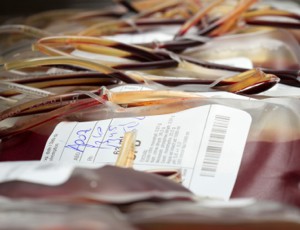
To evaluate the hemolysis biomarkers of packed red blood cells transfused by two different linear peristaltic infusion pumps at two infusion rates” Wilson et al (2018). Abstract: OBJECTIVE: To evaluate the hemolysis biomarkers of packed red blood cells transfused by two different linear peristaltic infusion pumps at two infusion rates. METHOD: An experimental and randomized […]

